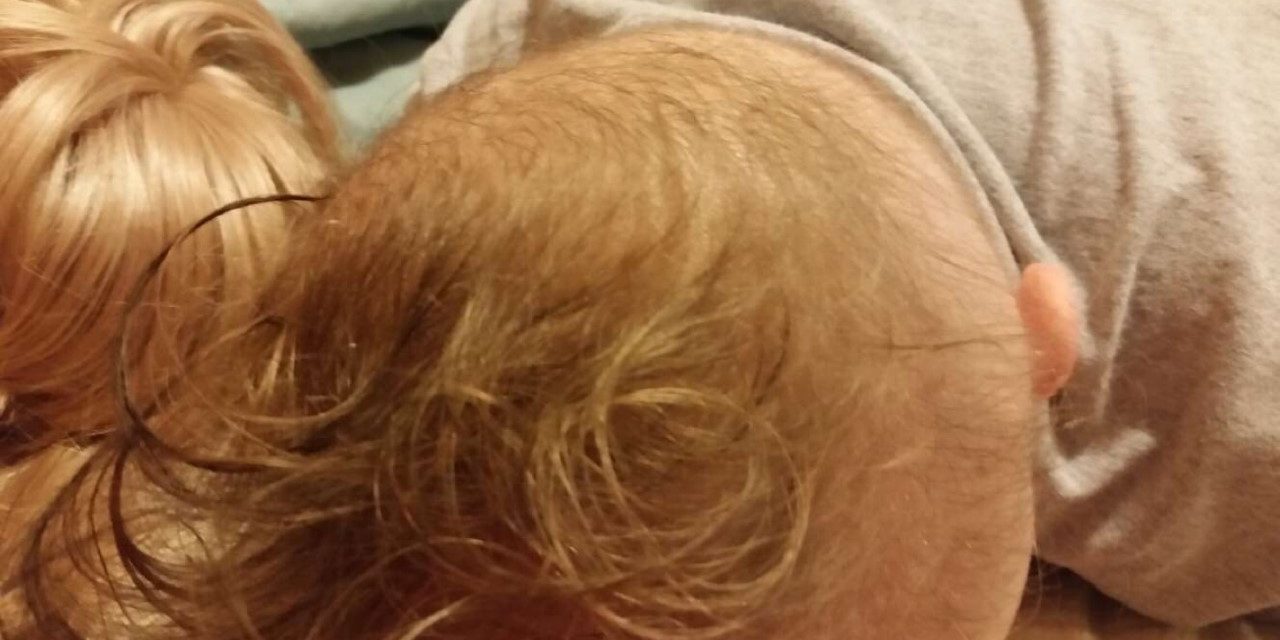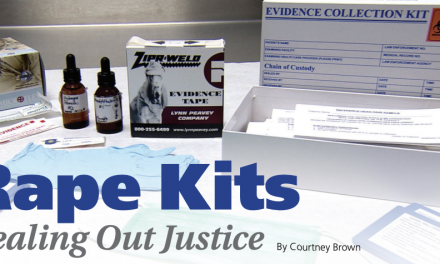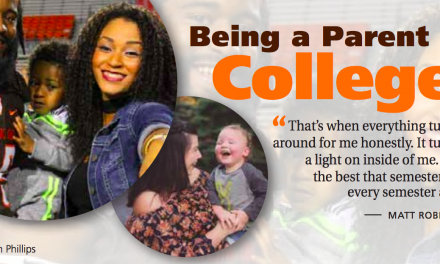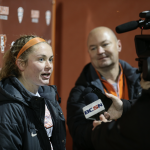The Hair Necessities
Cameron Canales, a woman with alopecia, finds a way to grow hair
By Khamila Stevenson | Contributing Writer
Spring | 2020
“Cameron Canales is a role model. Alopecia is not stopping her from being seen by other people, this is what makes her unique and I just can’t wait to see what the future will hold for her”
– Anna Sullivan, Canales’s manager.
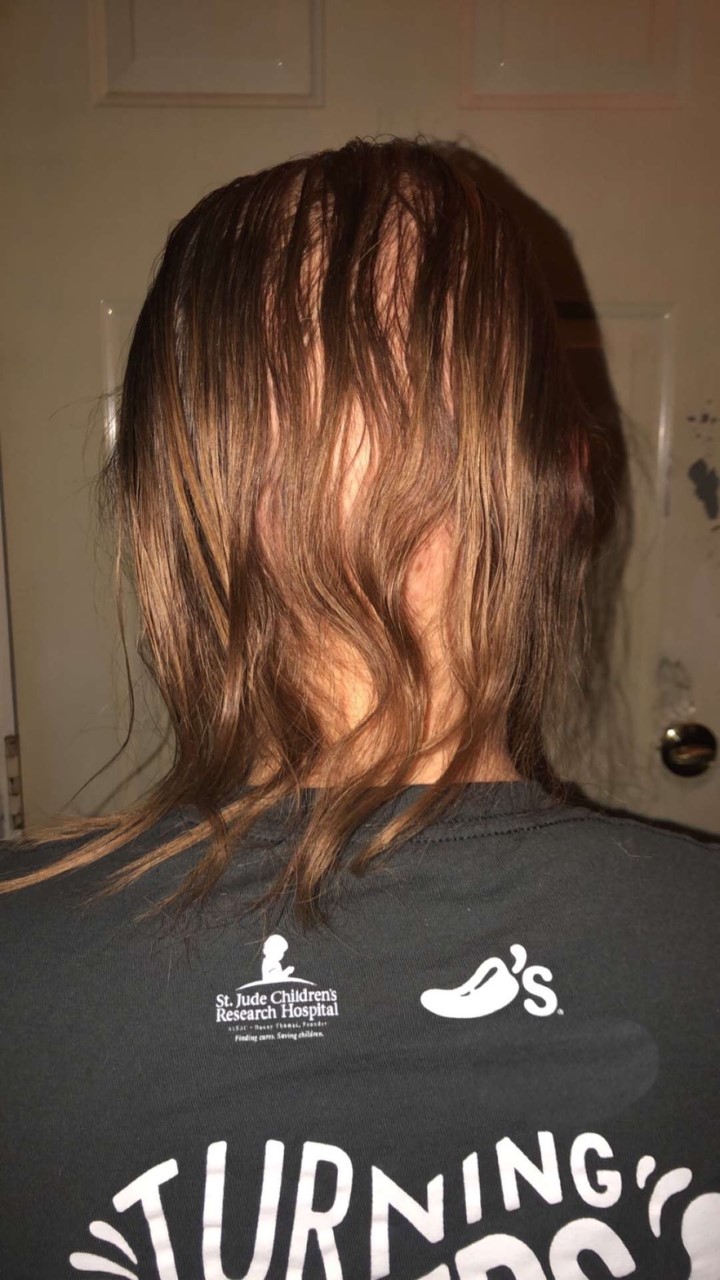

“It was a weird experience, but at the same time it wasn’t.”
– Cameron Canales
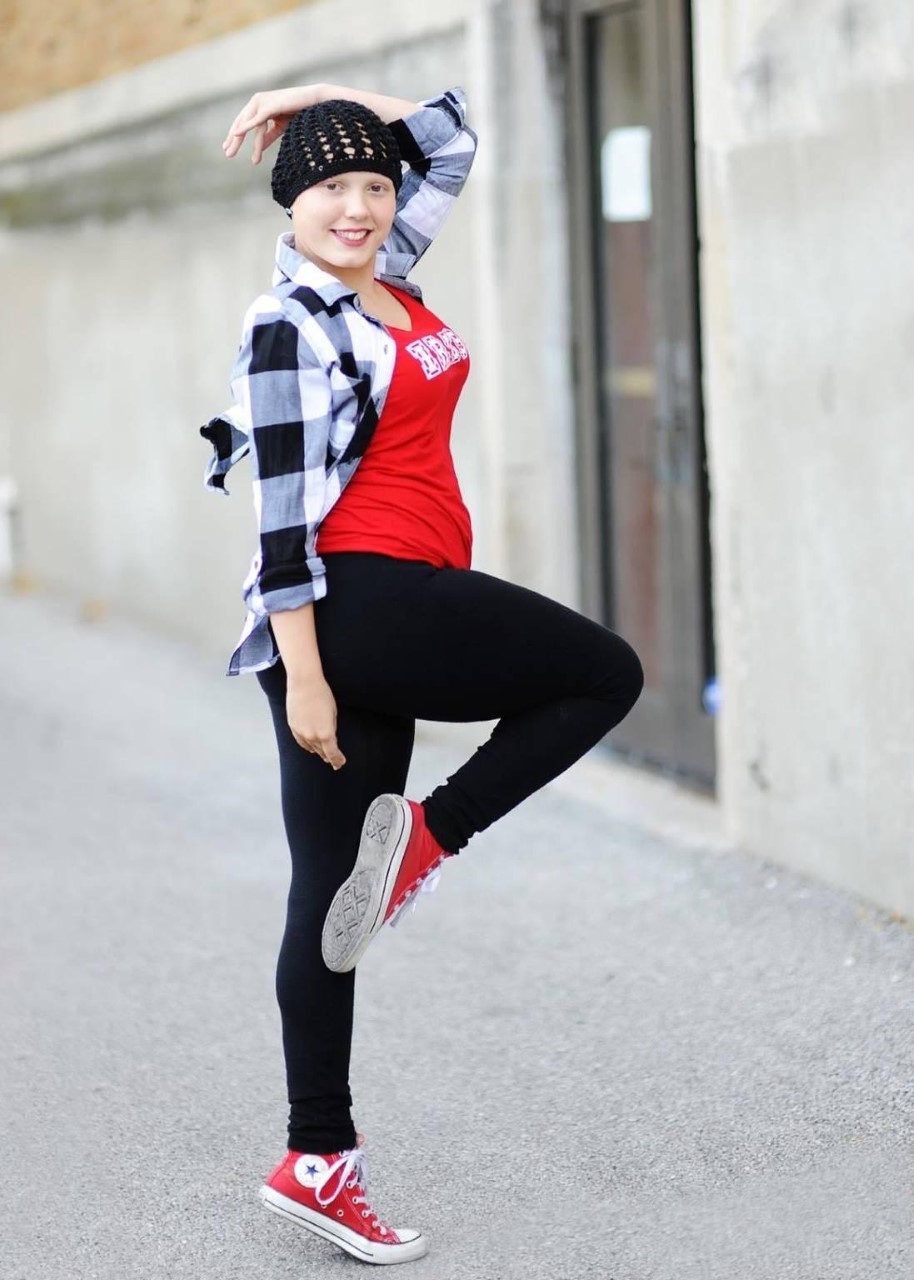
Over the course of a person’s lifetime, it is common for their hair to become thinner or to grow bald. However, most people do not go from being bald at birth to growing hair later in life.
Alopecia is a condition when someone has loss of hair in places where hair normally grows. Sometimes some people are born with alopecia, but there are also different types of alopecia, including telogen effluvium, alopecia totalis and involutional alopecia. Telogen effluvium is characterized by the thinning or shedding of hair. Involutional alopecia is the natural condition where hair grows thinner with age, such as males going bald as they age.
BGSU sophomore and Social Work major, Cameron Canales, has experienced this due to being born with alopecia totalis, where one experiences complete total hair loss. Canales, however, has found a way to grow hair in recent years.
As a little girl growing up, she always wondered what other people would think of her hair loss. She made friends easily when it came down to school. She said she was liked and loved by a lot of teachers and friends. Nevertheless, sometimes people with alopecia are unhappy with their appearance compared to others.
“Sometimes I felt a little unhappy with not having hair, because I didn’t get to have that full experience that some people had in high school, and because some people would just assume that I had cancer,” she said.
In high school, people got to curl their hair and got the full experience of being able to do different hairstyles styles, provided by a hairstylist or themselves. She said other people with styled hair made her think about what she would be like and do with her hair.
However, Canales had an opportunity to experience having hair herself. In a doctor’s appointment one day, the doctor asked her if she would like to start getting shots to help her hair grow. The doctor told Canales the shots may or may not work. The best they could do was a trial to see if they worked. Her doctor said if the results were good, then they would continue getting them. Canales decided to give it a few months to see if she saw any results.
The shots that were given to Canales were called Stelara shots. The shots may take at least 3-6 weeks for one to see any kind of improvement. There are some side effects which include bruising, headache, and itching. If any side effects should ever occur, Canales was to talk with their doctor or her healthcare provider.
When an appointment was made, she would make sure everything was going to be okay for that day. As she entered the doctor’s office, she sat and waited to be called into the room. Once she got called back to the room, the doctor gave her a layout of what was going to happen. The doctor did not want to do anything without her permission, which made her feel safe.
“When I first stepped into the room, I was very nervous. In order for me to be less nervous I had asked my mom to join me at my side while the doctor provided me the information that I needed. I needed some kind of support, or I probably would have skipped the doctor’s appointment,” Canales said.
Canales’s mom, Cindy Rafferty, said she was glad that she joined her daughter for the appointment and she was excited for her daughter because she would finally get to see that her daughter would be able to grow hair for the first time. This was a sentimental moment for the both of them.
“It was a weird experience, but at the same time it wasn’t. My doctor made sure that I understood what I was getting into and the ins-and-out of everything that would happen to me if I did or didn’t go through with the shots,” Canales said.
Once Canales’s hair started to grow, she was excited to see a change, but it also took some time to get used to. She said this was a really big moment for her, and she couldn’t wait to tell people she was close with. When she told everyone, they were excited for her.
“Cameron has been very satisfied with shots and we have seen the progress from the beginning, and she is willing to continue the shots. I am very proud of her and I will continue to support her and the decisions that will come,” Rafferty said.
During work, Canales gets a lot of stares from customers who may think she has cancer. When people stare at her, she ignores them and continues to do her job.
“I am very proud of my job here at Chili’s in Toledo and I will not let anything come between my work,” Canales said.
Once Canales started working, she said co-workers welcomed her with freshly bright smiles and treated her regularly.
Anna Sullivan, Canales’s manager, said, “She does not let her disability stand in the way of working. She’s very hardworking and likes to keep things organized for whenever there is a situation at hand.”
Canales said her story is important because it sets a high bar of recognition for people that have alopecia just like her.
“Getting shots have become the best thing that I have done in my life and I just want to help others out there that are just like me,” Canales said.
She said she wants her story to be told because she wants people in her community to know the real her. She feels her story may help other people with alopecia to see they are not alone.
“Cameron Canales is a role model. Alopecia is not stopping her from being seen by other people, this is what makes her unique and I just can’t wait to see what the future will hold for her,” Sullivan said.

